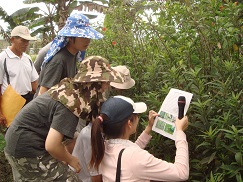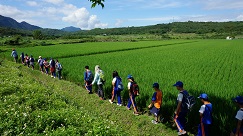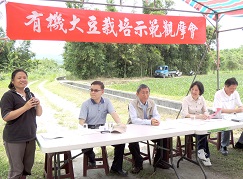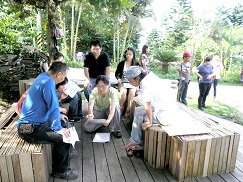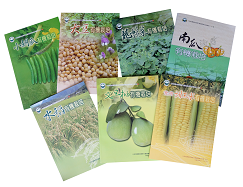|
|
Since 1994, we have been committed to teaching and promoting cultivation and processing techniques for organic farming as well as developing organic villages and a organic leisure agricultural recreation industry to maximize the region’s clean and beautiful environment and to cooperate with the government in promoting organic farming policies. We instituted organic cultivation techniques and integrated management of crops such as soybeans, corns, edible lilies, white gourd, pumpkin, pomelos, bell peppers, cucumbers, and fruit trees. In addition, by introducing the hedgerow-building techniques of farmland, we enriched the ecological environment and increased the number of beneficial natural enemies by 30%, effectively controlling organic crop pests and realizing the spirit and essence of organic farming. We successfully developed a continuous warm-water sterilization machine for rice seedlings as well as organic cultivation and nursery techniques for rice seedlings, which created a steady supply of organic seedlings, indicating a major breakthrough in organic rice cultivation. Regarding the promotion of the organic agricultural recreation industry, we taught the Loshan Village (Fuli Township, Hualien County). In 2002, we used the organic village concept to found the first organic village in Taiwan. In 2008, we used Loshan as the archetype to unite four other neighboring villages (i.e., Zhutian Village, Shipai Village, Yongfeng Village, and Fengnan Village) to form a beautiful and organic Lifestyles of Health and Sustainability (LOHAS) village. By consulting to the same model, we helped transform Xingjian Village (Sanxing Township, Yilan County), Donghua Village (Shoufeng Township, Hualien County), and Dafengdafu Village (Guangfu Township) into organic villages. We combined these villages to create a web and form the Eastern organic LOHAS corridor, in which all members work jointly to promote the organic agricultural recreation industry in Eastern Taiwan. Since 2011, we have offered training courses on organic agriculture at the Farmers’ Academy. Course content includes cultivation techniques, marketing management strategies, and field courses emphasizing hands-on experience, guiding farmers to gradually shift from traditional to organic farming. Furthermore, beginning in 2012, our research team visited local aboriginal tribes to enroll aboriginal farmers in professional training courses on organic agriculture, enabling them to solve problems that they have encountered in organic cultivation. To secure the values of the organic agricultural products, we actively encouraged the farmers to apply for organic certifications and on-site counseling by professional personnel. Certified organic areas have exhibited considerable growth. As of today, the cultivation area of the organic agricultural industry in Yilan and Hualien County has reached 1,000 ha, accounting for more than 1/4 of Taiwan's total certified area. To advertise our achievements in the research and development of organic agriculture, we presented the findings using easy-to-understand methods that taught the public how to apply the findings. We have published books on organic cultivation techniques for rice, sweet corns, pumpkin, chayote, pomelos, and cucumbers, as well as organic-related books on organic food recipes, recreational experience at organic villages, farmers’ markets, and organic learning handbooks for farmers and consumers. These endeavors enabled the concept of organic agriculture to be spread across various fields. |
|---|


